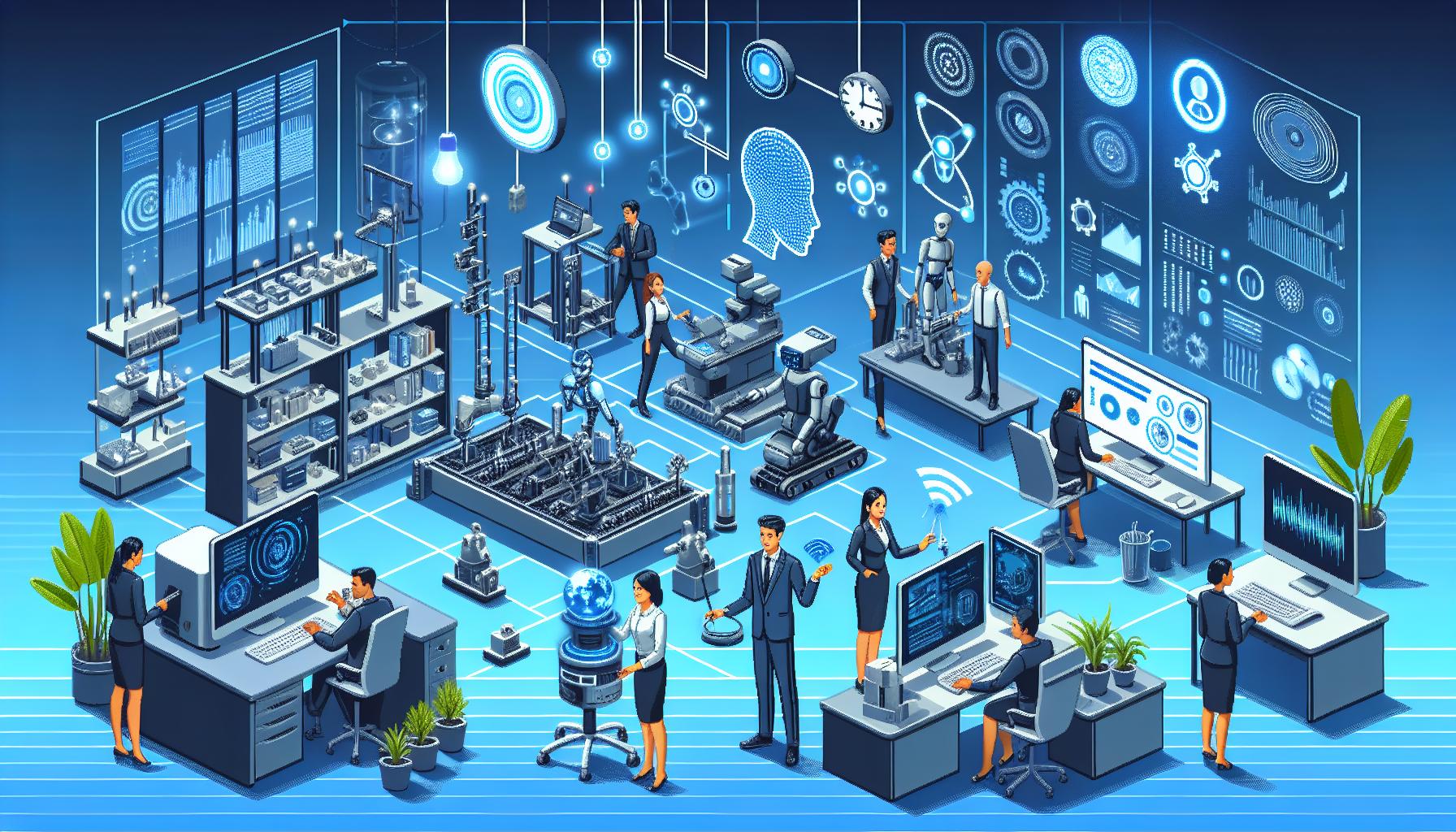The Unfolding Landscape of AI Job Market: Opportunities and Challenges Ahead

The Unfolding Landscape of A.I. Job Market: Opportunities and Challenges Ahead
The job market is currently experiencing a transformative shift driven by the rapid advancements in Artificial Intelligence (AI). A particularly striking indicator of this change is the data from the job posting site Indeed, which has reported a staggering 10-fold increase in generative A.I. job openings over the past year. Extending our view over the past two years, the figures become even more astonishing, showcasing a 75-fold rise.
The Global and US Job Statistics: A Stark Contrast
Despite the explosive growth in AI-related job postings, these positions still constitute a modest portion of the global job market. Worldwide, AI-related jobs account for only about 0.12% of all job postings. However, in the United States, the scenario is markedly different, with nearly 2% of jobs now involving AI—a number that is expected to continue growing in the coming years.
Opportunities Amidst Fears of Job Displacement
The integration of A.I. into various industries has sparked fears of job displacement. However, there is also a strong argument for the creation of new job opportunities. According to a recent IBM study, 40% of CEOs plan to hire more staff as a result of A.I. advancements. These newly created jobs are generally more lucrative, offering wages that are, on average, 77% higher than those for non-AI positions.
Global Discrepancies: The Uneven Distribution of Benefits
While the surge in A.I. job postings and the prospect of higher wages paint an optimistic picture, this scenario is not universally applicable. The benefits of A.I. job growth are unevenly distributed across different regions of the world. The World Bank estimates that there are between 154 million and 435 million online gig workers globally. Many of these workers are engaged in training and testing A.I. models, a crucial aspect of A.I. development. Unfortunately, these workers often do not enjoy the same benefits as their counterparts in more developed economies.
The Plight of A.I. Gig Workers: A Closer Look
A vivid example of these discrepancies is the situation of nearly 100 Kenya-based A.I. employees who recently called on the US government to support more substantial workplace protections. These workers have highlighted the pressing need for comprehensive training programs and mental health resources. Some of these employees reportedly earn less than $2 an hour and suffer from PTSD due to exposure to violent material while flagging and sorting content. Activists argue that these workers play as integral a role in the development of new A.I. products as engineers and executives but receive substantially less support.
The Role of CEOs and Corporate Policies
CEOs play a pivotal role in shaping the A.I. job market. The IBM study underscores that 40% of CEOs are inclined to expand their workforce to leverage A.I. capabilities fully. However, this expansion must be accompanied by policies that ensure fair compensation and adequate protections for all workers involved in A.I. roles. This includes providing robust training programs, mental health resources, and ensuring equitable benefits regardless of geographic location.
The Importance of Fair Compensation and Worker Protections
The disparities in compensation and worker protections between A.I. gig workers and their counterparts in more developed economies highlight the need for comprehensive policy interventions. A.I. gig workers, particularly those in developing countries, often lack the benefits and protections that are more common in developed economies. This not only creates a significant disparity in quality of life but also raises ethical concerns about the exploitation of vulnerable workforces.
The Role of International Organizations and Governments
International organizations and governments have a critical role to play in addressing these disparities. Policies aimed at ensuring fair wages, comprehensive training, and mental health support are essential. Additionally, there is a need for international collaborations to establish global standards for A.I. workforce protections. This would help ensure that the benefits of A.I. job growth are more evenly distributed and that all workers, regardless of their geographical location, receive fair compensation and adequate protections.
Conclusion: Navigating the Future of A.I. Job Market
The A.I. job market is undeniably on a rapid upward trajectory, with significant opportunities for job creation and higher wages. However, this growth brings to the forefront critical challenges that need to be addressed to ensure equitable benefits for all workers involved in the A.I. sector. As we navigate this evolving landscape, it is crucial to implement policies that safeguard worker protections, ensure fair compensation, and provide the necessary support for mental health and training. Only then can we truly harness the transformative potential of A.I. in a manner that is inclusive and equitable for all.

